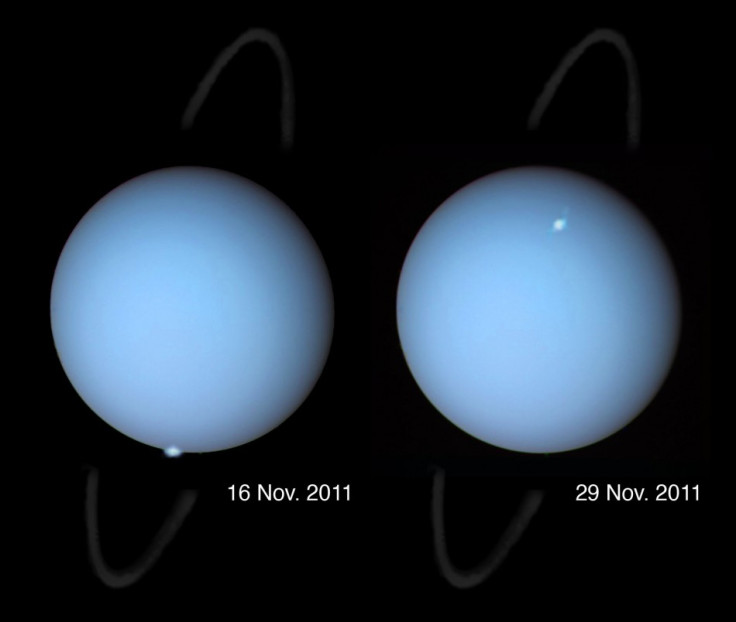Hubble Captures First Images of Unique Auroras on Uranus

Astronomers have captured unique images of auroras above the giant ice planet Uranus for the first time with the help of Hubble Space Telescope, according to the Observatoire de Paris in Meudon in France.
Astronomers found that aurora on Uranus are fainter than they are on Earth because the magnetosphere of Uranus is very poorly compared to earth.
Uranian light show consisted of short-lived, faint, glowing dots. Unlike auroras on Earth, which can turn the sky greens and purples for hours, they found the newly detected auroras on Uranus appeared to last only for a couple minutes.
Aurora lights or northern lights are natural display in the sky particularly in the high latitude region on the Earth.
Northern lights usually occur in the atmosphere when the electrically charged particles from the sun enter the earth's magnetosphere. The collision of solar particles on earth magnetosphere creates aurora lights.
Twenty five years ago, astronomers had first witnessed Uranian auroras when the Voyager 2 spacecraft whizzed past the planet and recorded spectra from of the radiant display. Since then they are observing Uranus magnetosphere.
"Since then, we've had no opportunities to get new observations of this very unusual magnetosphere," said Laurent Lamy, reasercher at the Observatoire de Paris in Meudon, France, in a statement.
Astronomers captured these unique images in 2011, when Earth, Jupiter and Uranus were lined up so that the solar wind could flow from the Sun, past Earth and Jupiter, and then toward Uranus.
In mid-September 2011, the Sun had produced a huge X type solar flare. The solar flare was quite intense and it was travelling at a great speed and it took just two days for the solar flare to reach the earth.
After two weeks, the solar wind speed passed Jupiter at 500 kilometers per second. By calculating the speed of the charged particles researchers estimated that it would reach Uranus in mid-November.
Astronomers believe that better understanding of Uranus' magnetosphere could help scientists test their theories of how Earth's magnetosphere functions.
"We have ideas of how things work on Earth and places like Jupiter and Saturn, but I don't believe you really know how things work until you test them on a very different system," said Lamy in an article published by American Geophysical Union journal.
© Copyright IBTimes 2025. All rights reserved.





















